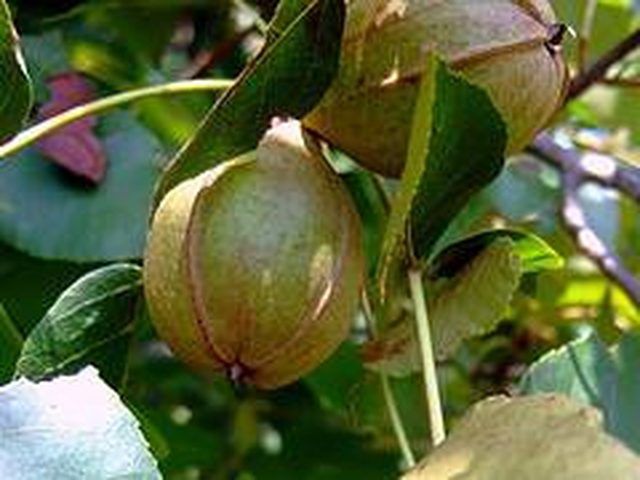Bulbs
Flower Basics
Flower Beds & Specialty Gardens
Flower Garden
Garden Furniture
Garden Gnomes
Garden Seeds
Garden Sheds
Garden Statues
Garden Tools & Supplies
Gardening Basics
Green & Organic
Groundcovers & Vines
Growing Annuals
Growing Basil
Growing Beans
Growing Berries
Growing Blueberries
Growing Cactus
Growing Corn
Growing Cotton
Growing Edibles
Growing Flowers
Growing Garlic
Growing Grapes
Growing Grass
Growing Herbs
Growing Jasmine
Growing Mint
Growing Mushrooms
Orchids
Growing Peanuts
Growing Perennials
Growing Plants
Growing Rosemary
Growing Roses
Growing Strawberries
Growing Sunflowers
Growing Thyme
Growing Tomatoes
Growing Tulips
Growing Vegetables
Herb Basics
Herb Garden
Indoor Growing
Landscaping Basics
Landscaping Patios
Landscaping Plants
Landscaping Shrubs
Landscaping Trees
Landscaping Walks & Pathways
Lawn Basics
Lawn Maintenance
Lawn Mowers
Lawn Ornaments
Lawn Planting
Lawn Tools
Outdoor Growing
Overall Landscape Planning
Pests, Weeds & Problems
Plant Basics
Rock Garden
Rose Garden
Shrubs
Soil
Specialty Gardens
Trees
Vegetable Garden
Yard Maintenance
What Is a Hickory Nut?
What Is a Hickory Nut?. A hickory nut (also called Carya fruit) is the hard-shelled nut with a husk of the Hickory Tree. They grow primarily in the eastern part of the U.S. and Asia. They are most often used in recipes for cakes, candies, sweet breads and cookies. The nuts are also substituted, sometimes, in recipes for pecans. The taste and size...

A hickory nut (also called Carya fruit) is the hard-shelled nut with a husk of the Hickory Tree. They grow primarily in the eastern part of the U.S. and Asia. They are most often used in recipes for cakes, candies, sweet breads and cookies. The nuts are also substituted, sometimes, in recipes for pecans. The taste and size of the nut depends on the type of hickory tree. The nuts of some varieties, that are bitter tasting, are used in animal feed.
Types
The most common North American types of hickory nuts (trees) are Bitternut, Mockernut, Pignut, Shellbark and Shagbark. The latter two types are the best tasting and are the varieties most often used for eating, cooking and baking. Asia also has a number of hickory tree species that produce hickory nuts, such as Dabie Shan Hickory, Hunan Hickory, Chinese Hickory, Guizhou Hickory and Vietnamese Hickory.
Harvesting
Nuts begin to fall from the hickory trees in early autumn. Start harvesting as soon as you notice this, as animals love these nuts. Squirrels, chipmunks, raccoons and mice may beat you to it, if you put off your hickory nut foraging. It's a good idea to pick up the whole nut and remove the husks later. Save the husks, as they make excellent garden mulch in your yard. After removing the husks, spray off any dirt or debris with water and then spread them to dry for a few days, in the sun, turning them a time or two. The hickory nuts are now ready to crack open.
Cracking
Cracking the hard hickory nut shell takes some practice and knowledge. Using a regular hammer or brick, hit the shell one-third of the way down from the stem, at the side of the nut. Hit the shell sharply and you should be rewarded with an intact nut. Using a regular nut cracker will crush the nut, resulting in small pieces.
Preparation
Hickory nuts are used in many recipes, but they can also be enjoyed raw, roasted or baked. The easiest way to cook them is in the oven. Simply spread the nuts onto a cookie sheet. They are rich in fat, so there is no need to apply any type of oil. In a 200 degree F oven, bake the hickory nuts until they are golden brown, stirring them occasionally. After baking, they make a delicious snack, but you can also make nut butter at this point. Just drop a couple of handfuls of the nuts into the blender, adding small amounts of sesame oil until you get the desired consistency. For added flavor, add sea salt to taste.
Nutrition
As with all foods, raw is the most nutritious. Store raw hickory nuts in your refrigerator or freezer for up to two to three months. The nutritional information for a 1-oz. or a nine-nut serving is 186 calories, 5.2 g carbohydrates, 3/6 g protein, 18.2 g fat and 1.8 g fiber, providing 10 to 20 percent of the daily requirements for magnesium and thiamin.